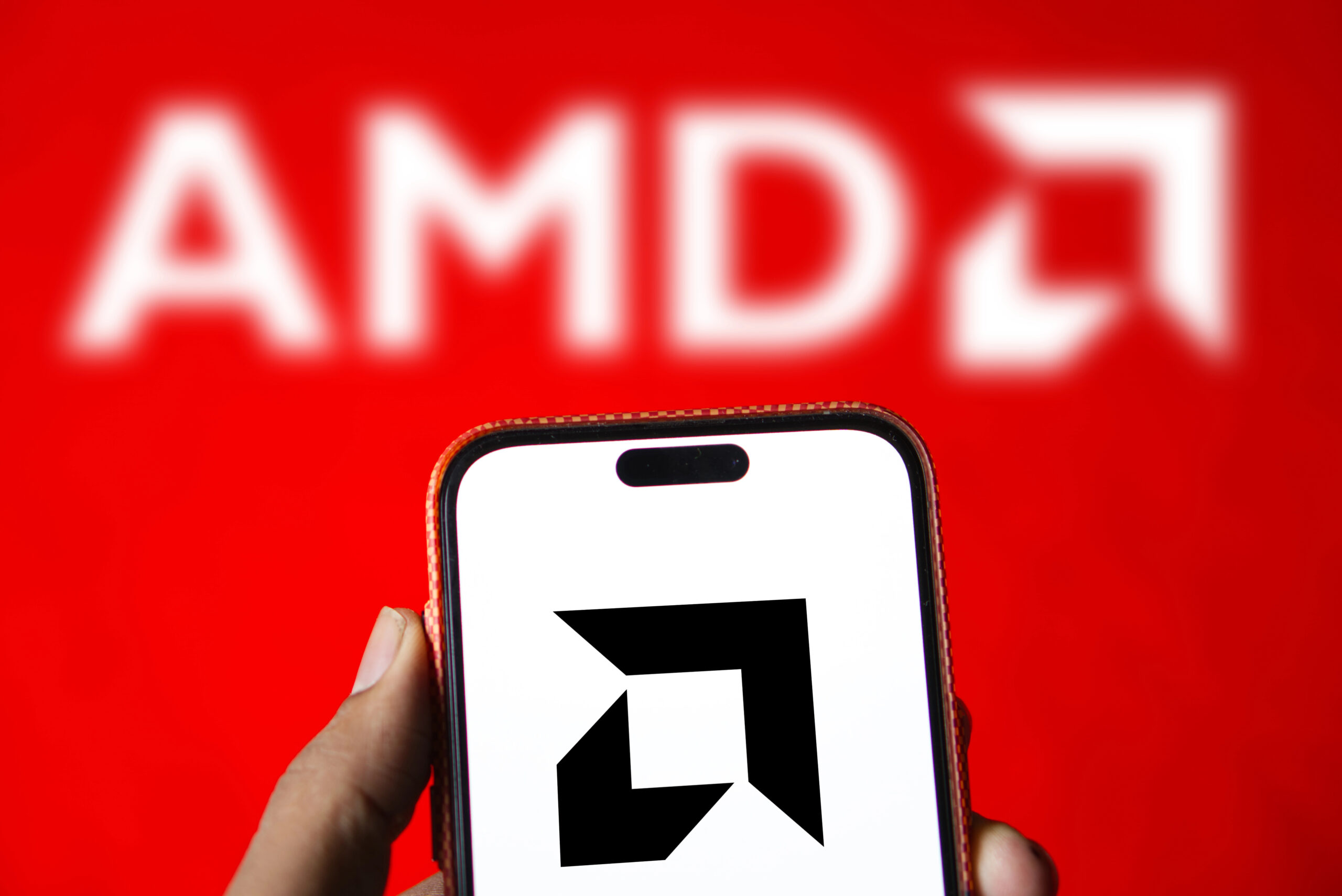In a bold move that intensifies the AI arms race, AMD announced a $5 billion acquisition of ZT Systems. This move signals its determination to challenge NVIDIA‘s dominance in the burgeoning AI and cloud computing markets. This strategic purchase allows AMD to transform into a comprehensive solutions provider. All of which achievable by combining ZT’s expertise in data-center design with AMD’s cutting-edge chip technology. Recognize how this acquisition allows AMD to better serve tech giants like Microsoft and Meta. Meanwhile, potentially reshaping the competitive dynamics in data centers across the Asia-Pacific region. The deal underscores the critical importance of AI capabilities in today’s tech industry. Especially with a promising hope to deliver enhanced performance and efficiency for the most demanding computational needs.
AMD’s $5 Billion Acquisition of ZT Systems

AMD’s recent $5 billion acquisition of ZT Systems marks a significant milestone in the company’s strategy. One of the strategies is to challenge NVIDIA’s dominance in the AI and cloud computing sectors. This bold move demonstrates AMD’s commitment to expanding its footprint in the rapidly growing AI market. Especially with far-reaching implications for data centers across the Asia-Pacific region and beyond.
Strengthening AMD’s AI Infrastructure
- Integrating ZT Systems’ expertise in high-performance servers and AI infrastructure, AMD offers comprehensive solutions to clients like Microsoft and Meta. This acquisition enables a combination of cutting-edge chip technology with ZT’s data-center design capabilities. In response, creating a powerful synergy that could revolutionize the AI landscape.
Competitive Edge in Cloud Computing
- The strategic purchase of ZT Systems complements AMD’s recent acquisitions of Xilinx and Pensando Systems. This strategy further solidifies its position in the competitive cloud computing market. This trio of acquisitions equips AMD with a robust portfolio of technologies essential for designing and implementing state-of-the-art data centers. Since those aspects are crucial for AI applications such as ChatGPT.
Implications for the AI Industry
- As AMD intensifies its rivalry with NVIDIA, this acquisition signals a new era of innovation and competition in the AI sector. By focusing on AI infrastructure and offering end-to-end solutions, AMD acts as a formidable challenger to NVIDIA’s long-standing dominance. This move could lead to accelerated advancements in AI technologies. Plus, it could diversify options for businesses looking to harness the power of artificial intelligence.
How This Deal Boosts AMD’s AI and Cloud Computing Capabilities
Integrated Solutions for Major Clients
- AMD’s acquisition of ZT Systems significantly enhances its ability to offer comprehensive AI and cloud computing solutions. By combining ZT’s expertise in data-center design with AMD’s cutting-edge chip technology, you’ll see a more robust offering that caters to the needs of industry giants like Microsoft and Meta. This integration allows AMD to provide end-to-end solutions, from hardware to infrastructure design, giving them a competitive edge in serving large-scale clients.
Strengthening AI Infrastructure
- The deal also positions AMD to make substantial strides in AI infrastructure development. ZT Systems’ proficiency in high-performance servers and AI-specific hardware complements AMD’s existing portfolio. This synergy also enables the creation of more efficient and powerful AI systems, crucial for running complex applications like ChatGPT. As a result, you can expect AMD to deliver more tailored and optimized solutions for AI workloads, challenging NVIDIA’s current dominance in this space.
AMD’s Data Center Capabilities Expansion
- With ZT Systems’ expertise, AMD also revolutionizes data center design and implementation. This acquisition allows AMD to offer more comprehensive data center solutions, particularly in the rapidly growing Asia-Pacific region. You’ll likely see AMD developing innovative approaches to data center architecture, optimizing for AI and cloud computing workloads while potentially reducing energy consumption and improving overall efficiency.
AMD’s Implications for the AI Infrastructure Market
AMD’s acquisition of ZT Systems is poised to reshape the AI infrastructure landscape. This strategic move will likely have far-reaching consequences for both competitors and customers in the rapidly evolving AI sector.
AMD’s Enhanced Competitive Position
- By integrating ZT Systems’ expertise in data center design and high-performance servers, AMD significantly bolsters its ability to offer comprehensive AI solutions. This also positions the company as a more formidable challenger to NVIDIA’s dominance in the AI chip market. The acquisition enables AMD to provide end-to-end solutions, from chip design to data center implementation, potentially attracting more enterprise clients seeking turnkey AI infrastructure.
Accelerated Innovation
- The merger of AMD’s chip technology with ZT Systems’ server design capabilities is likely to spur innovation in AI infrastructure. This synergy could lead to more efficient, powerful, and cost-effective solutions for AI applications, benefiting industries ranging from cloud computing to autonomous vehicles. As a result, we may see an acceleration in the development and deployment of advanced AI technologies across various sectors.
Market Dynamics Shift
- This acquisition also signals a potential shift in the AI infrastructure market dynamics. As AMD strengthens its position, it may lead to increased competition and potentially more competitive pricing for AI solutions. This could benefit end-users by providing more options and potentially driving down costs for AI infrastructure. Additionally, the move may spur other companies to pursue similar strategies, potentially leading to further consolidation in the AI hardware and infrastructure space.
AMD’s Strategy to Challenge NVIDIA’s Dominance
AMD’s $5 billion acquisition of ZT Systems further represents a bold move to reshape the AI and cloud computing landscape. This strategic investment aims to close the gap with NVIDIA, the current market leader, by enhancing AMD’s capabilities in several key areas.
Comprehensive Solutions for AI Infrastructure with AMD
- By integrating ZT Systems’ expertise in data-center design with its own cutting-edge chip technology, AMD is positioning itself to offer end-to-end solutions for AI infrastructure. This holistic approach will allow the company to better serve major clients like Microsoft and Meta, who require sophisticated, high-performance computing environments for their AI initiatives.
Leveraging Synergies for Innovation
- The acquisition further complements AMD’s recent purchases of Xilinx and Pensando Systems, creating a powerful ecosystem of technologies. This synergy is expected to accelerate innovation in AI chip design, server architecture, and data center optimization. By combining these capabilities, AMD aims to develop more efficient and powerful AI solutions that can compete with NVIDIA’s offerings.
Expanding Market Reach
- With ZT Systems’ established presence in the high-performance server market, AMD thus gains immediate access to a broader customer base. This expanded reach, coupled with AMD’s existing relationships, positions the company to capture a larger share of the rapidly growing AI sector. The move also strengthens AMD’s foothold in key markets across the Asia-Pacific region, where demand for AI infrastructure is surging.
Outlook for AMD in the Asia-Pacific AI Data Center Market
AMD Expanding Footprint in a Booming Market
- As AMD strengthens its position in the AI sector through strategic acquisitions, the Asia-Pacific region emerges as a crucial battleground. With its rapidly growing economies and increasing digital transformation, it further presents significant opportunities for AMD to challenge NVIDIA’s dominance. The company’s enhanced capabilities in data center design and AI infrastructure position it well to capture a larger share of this burgeoning market.
Challenges and Opportunities
- While AMD’s acquisition of ZT Systems bolsters its competitive edge, the company faces stiff competition from established players like NVIDIA and Intel. However, AMD’s comprehensive solutions, combining chip technology with data center expertise, prove attractive to major tech firms expanding their presence in Asia-Pacific. The region’s diverse markets, from mature economies like Japan and South Korea to emerging powerhouses like India and Indonesia, offer AMD a chance to tailor its offerings to specific needs and regulations.
Potential Impact on Regional Data Centers
- AMD’s enhanced portfolio also revolutionize data center operations across Asia-Pacific. By offering integrated solutions that optimize performance and energy efficiency, AMD may appeal to both established tech giants and emerging local players. This could lead to a shift in the region’s data center landscape, potentially accelerating the adoption of AI technologies and cloud computing services. As countries in the region prioritize digital infrastructure development, AMD’s expanded capabilities position it to play a pivotal role in shaping the future of AI-driven data centers throughout Asia-Pacific.
Keeping It Short
As you’ve seen, AMD’s acquisition of ZT Systems is a game-changing move in the AI and cloud computing arena. This strategic investment positions AMD to compete more effectively with NVIDIA, offering end-to-end solutions that cater to the evolving needs of tech giants and data centers worldwide. By integrating ZT’s expertise with its chip technology, AMD is poised to drive innovation and efficiency in AI infrastructure. As the industry continues to evolve, keep a close eye on how this acquisition shapes the competitive landscape, influences technological advancements, and potentially transforms the future of AI and cloud computing. The ripple effects of this $5 billion deal will likely be felt across the tech sector for years to come.
More Stories
Philippines Launches Comprehensive Crypto Reporting Framework for Financial Transparency
CARF mandates that domestic cryptocurrency platforms and intermediaries report cross-border digital asset transactions.
Pushing Compute Limits with NextDC’s Ultra-Dense Melbourne Data Center
In today’s fast-changing digital world, a strong and efficient computing infrastructure is more essential than ever. You now stand at...
Taiwan Tightens IoT Gateways with Export Curbs on Chinese Tech Giants
In a bold move echoing through global tech, Taiwan imposed new IoT export restrictions on Chinese giants Huawei and SMIC. Now, Taiwanese firms must seek government approval before working with these companies.
Cloud Strain Pushes Oracle to Accelerate Global Infrastructure Expansion
In today’s fast-changing digital world, demand for strong cloud infrastructure has surged to record levels. This growth is pushing Oracle...
Smart Energy Integration Accelerates AI Data Center Evolution in Malaysia
Malaysia’s smart energy & AI data initiative pioneers a venture that blends smart energy integration with AI-driven data center development
Bank Muamalat Unleashes ATLAS, Malaysia’s First Islamic Digital-Only Bank
Bank Muamalat has unveiled ATLAS, Malaysia’s first Islamic digital-only bank. As you explore this innovative platform, developed in collaboration with Dutch fintech leader Backbase, you will find a comprehensive suite of AI-driven, Shariah-compliant financial services at your fingertips.


